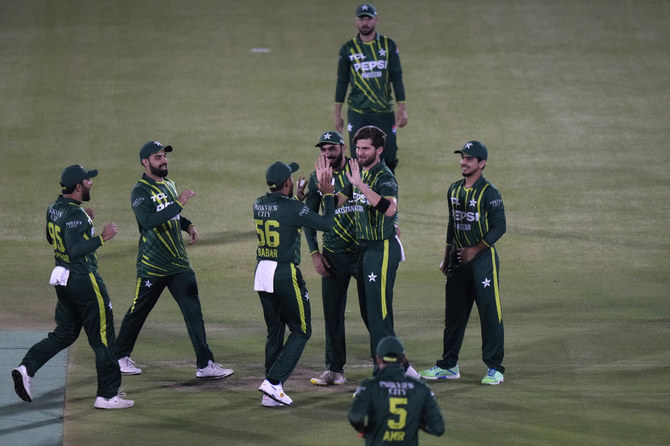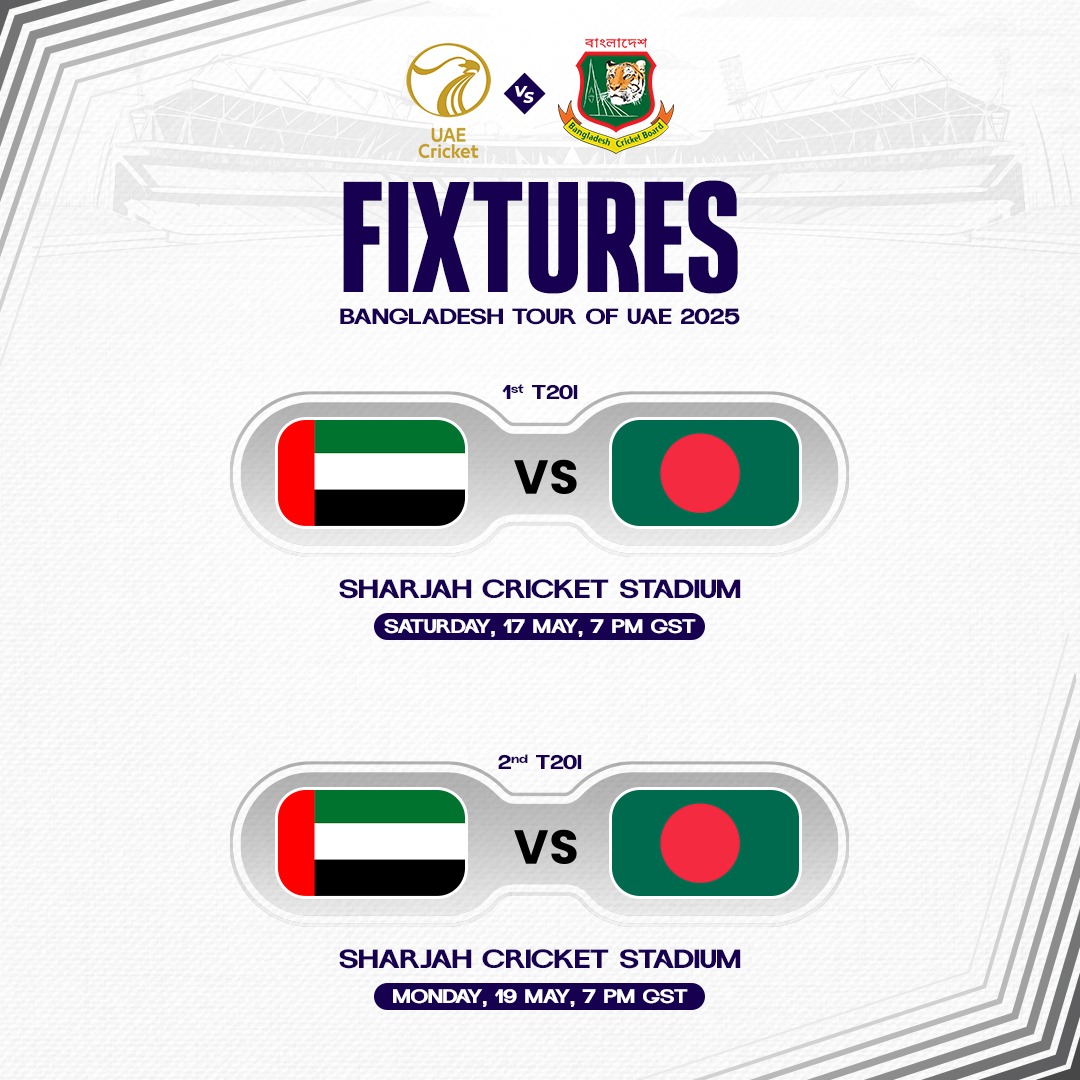LONDON: In cricketing history, the exploits of Vaibhav Suryavanshi are assured of a prime place. At 14 years of age, he scored a century in 35 deliveries for the Rajasthan Royals in the Indian Premier League on April 28, 2025.
The outing was only his third IPL match, having memorably hit the first ball he received on his debut for six. The century was the second-fastest in IPL history. The attack Suryavanshi plundered for 11 sixes and seven fours contained established internationals such as Afghanistan’s Rashid Khan.
Suryavanshi has also shown his talents with a 58-ball hundred for India U-19s against Australia U-19s in an unofficial Test in Chennai last October. He has scored half-centuries at U-19 level against Sri Lanka and the UAE, as well as 71 off 42 balls for Bihar against Broda in India's domestic 50-over competition. This is good to hear in an era when T20 cricket is fast becoming cricket’s dominant format, threatening to obscure the longer formats.
It occurred to me that the generation that has grown up with the rise of T20 cricket may be unaware what declaration cricket means. Declarations are not usually a feature of short-format cricket but they are available in Test match and first-class cricket matches in which both teams can bat twice. A declaration is a strategic tool, when the batting team decides to end its innings before all players are out. There are various circumstances when this may be relevant, but it is usually to try and enforce a victory.
A common reason for declaring is to set a target for the opposition to chase. By declaring at a certain point, the captain aims to give the opposition a difficult, but achievable, target in the time remaining. This encourages the opposition to take risks while chasing the score, increasing the likelihood of them losing wickets. Several variables need to be taken into account by the captain who is considering a declaration. These include the time remaining in the match, pitch conditions — if it is deteriorating, for example — strength of the opposition, weather forecasts and the level of team support for the decision.
A recent example of a declaration that did not work out satisfactorily was that made by Nottinghamshire against Warwickshire in the County Championship. The latter were bowled out for 97 in their first innings. Nottinghamshire then amassed 367, but rather slowly at the end of the innings. Warwickshire, trailing by 274 on first innings, entered the fourth and final day on 163 for six in their second innings.
But rain, which was forecast, prevented play until 15.45, leaving Nottinghamshire’s bowlers just 36 overs to bowl out their opponents on a benign pitch. They failed to do so against some obdurate batting and were left to rue a failure to press home their advantage through an earlier declaration.
Declaration is both an art and a science. Vast amounts of data are available in today’s game to analysts to determine optimum times for declaration, but the ultimate decision rests with the captain and coach.
Three hundred years ago, it rested with the captain, based upon his assessment of prevailing conditions, perhaps with input from trusted colleagues. Declaration was the buttress of the game. It remained so, in my experience, in southern England into the early 1970s before league cricket, with its limitations or prohibition on declarations, became the norm, spreading from the north and midlands.
Throughout this period of change there has been a resistant strand. Perhaps, on reflection, not resistant but a desire to carry on an ageing tradition of declaration cricket, unaffiliated to formalised league cricket. Recently, I was able to witness an example of this. Tim Peters, a member of the cup-winning Drifters team in Chiang Mai, invited me to attend a match between the Royal Household Cricket Club and a wandering team, the Invalids, for whom he was playing.
This arcane, fascinating, part of cricket’s ecosystem, is far removed from Suryavanshi’s IPL feat. The setting was pastoral, in the shadow of Windsor Castle, adjoined by paddocks where the previous monarch’s horses pranced at will. After negotiating security, I wondered, on approaching the ground through long leafy driveways, if the match would be declaration based. Surely it would be, in time-honored tradition.
The Invalids CC is a wandering team. It has no home ground. There are a decreasing number of such fascinating clubs. The oldest one is I Zingari, founded in 1845 by a group of young aristocrats whose intention was to own no cricket ground of their own, but sought to foster and spread the spirit of amateur cricket at any country house where the hosts would provide hospitality and generosity. In recognition of this, the hosts would not be asked to provide any “professional,” paid bowlers, as was the custom at the time.
The origins of the Invalids CC were different. It was founded in 1919 by J.C. Squire, poet, critic and editor of the London Mercury magazine. The name was given in honor of several players wounded in the First World War, while the chosen club colours, inspired by army officers’ hospital pyjamas, were hospital blue and old gold. A pair of crossed crutches was chosen as the club’s crest. In the early days, Squire assembled a team of writers, journalists and actors, whose thirst for the game exceeded their abilities.
Their opponents were mainly village sides and this is still largely the case today. Although the Royal Household ground is not a part of a village it carries a similar ambience. The club was founded in 1905 by King Edward VII. Its pavilion displays photographs and autographs of famous players, artifacts from previous matches, tours and visiting teams. One of these was the Vatican Cricket Club. In a moment of serendipity, a frame enclosed a bat signed by Pope Francis hung on the wall. It was the day of his funeral.
On the field, the match was declaration based. The Royal Household declared on 119 for nine wickets on the stroke of the cut-off time when tea was to be taken. After a fine English tea, the Invalids collapsed to 14 for four. A recovery was achieved and 35 runs were required from the last six overs, only two Invalids wickets remaining. At this point the home team adopted a field setting in which almost all fielders were on the boundary.
Those who know only of T20 cricket would have been puzzled. In that format, there is a limit on the number of boundary fielders and a stipulation that there must be a certain number of fielders within a 30-metre circle drawn from the centre of the pitch. This is a restriction that has crept into most league cricket but has been resisted by those seeking to preserve old traditions. At Windsor the old tactic worked for the home team as the remaining Invalids batters failed to outmanoeuvre the cunning field settings, losing the match by a few runs.
The combined runs in the match amounted to 231 scored from close to 500 deliveries. The contrast with Suryavanshi’s feat is stark. Cricket has a rich and long history. At Windsor a part of that was being preserved, but societal change has created very different environment in which the game’s new history is being written by prodigies such as a 14-year-old Indian.



























